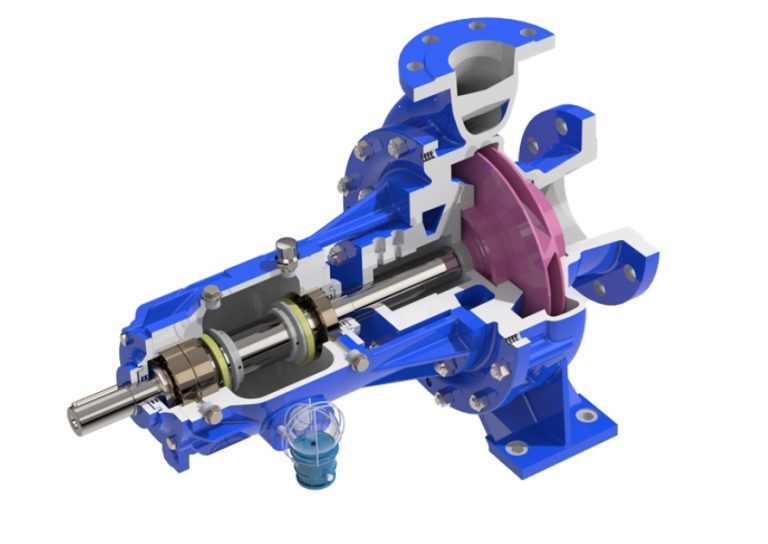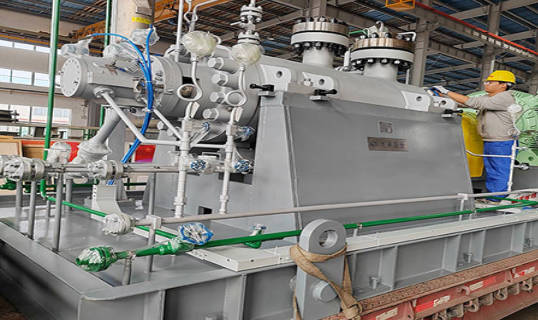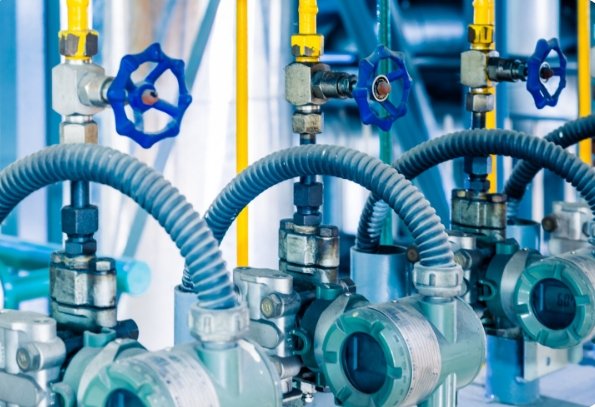
The Criticality of Chemical Pump Reliability
In any plant moving acids, solvents, slurries, or hot liquids around – whether it’s a refinery cracking unit, a fertilizer plant, or a coal-to-chemicals complex – the pumps have to work. When one goes down, the whole line stops, tanks back up, and suddenly you’re burning money by the hour. Two problems show up more than any others: cavitation that eats impellers alive and clogging that chokes the flow. This guide comes straight from the shop floor at Longgang, where we’ve been building chemical centrifugal pumps for years. We’ll walk you through what actually happens and, more importantly, what you can do about it today.
Understanding the Dual Threats: Cavitation and Clogging
Defining Cavitation in Chemical Pumping
Cavitation starts when the pressure at the pump eye drops so low that the liquid literally boils, even though it’s not hot enough to boil in the tank. Tiny vapor bubbles form, get carried into the impeller, and then the pressure jumps back up. Those bubbles slam shut with a bang you can sometimes hear across the pump room. Each collapse is like a tiny hammer blow on the metal. Do it a million times and you get those classic pockmarked, sponge-looking holes in the impeller vanes and volute. In corrosive services, the damage shows up even faster because the fresh metal exposed by every pit gets eaten by the chemical straight away.
The Mechanics of Clogging
Clogging is simpler: something gets in the way. It might be crystals dropping out of a saturated solution the moment the temperature dips five degrees, fibers from a filter cake, polymer strings, or just sand that slipped past the strainer. Flow drops, amps climb, bearings overheat, and if nobody notices in time, the mechanical seal cooks itself.
Comprehensive Strategies for Preventing Cavitation
Root Causes of Cavitation
Nine times out of ten, the problem is that the NPSH available is lower than what the pump needs. The liquid just doesn’t arrive at the impeller with enough pressure on it. Typical culprits: suction line too long or too small, strainer half blocked, tank level lower than usual, or the fluid running 20–30 °C hotter than the pump curve was calculated for.
System Design and Installation Checks
Get the suction side right from the start, and you’ll save yourself years of grief.
- Suction Line Optimization: Keep it short, keep it straight, and go up one pipe size if you’re anywhere close to the limit. Every extra elbow costs you a head you can’t afford.
- Reservoir Height: Even an extra meter of liquid level above the pump centerline can be the difference between quiet running and a pump that sounds like a box of rocks.
- Temperature Control: On volatile fluids like light hydrocarbons or hot caustic, a simple water jacket on the suction pipe or a small cooler can drop the vapor pressure enough to kill cavitation dead.
Operational Best Practices
Don’t run the pump way out on the right-hand side of the curve chasing extra flow – that’s the fastest way to starve the eye. Same thing on the left: throttling the discharge too hard can push you into recirculation cavitation. Stay inside the band where the manufacturer says the pump runs happily, usually 70–120 % of BEP flow. And always crack the vent on start-up; a slug of air sitting on top of the impeller is just as bad as low NPSH.
Effective Methods for Combating Clogging
Identifying Common Clogging Materials and Scenarios
In urea plants, we see crystals form the moment the melt cools below 133 °C. In coal-gasification units, it’s ash and char fines. In phosphoric acid, it’s gypsum scale. Know your enemy – take a sample of whatever is stuck in the pump and you’ll know exactly what design change or flush routine you need.
Design Solutions for Solids Handling
Pick the right pump for the job instead of forcing a standard process pump to do something it was never meant for.
- Impeller Selection: Closed impellers are efficient but choke easily. A semi-open or vortex impeller gives you wider passages and lets chunks slide through.
- Radial Dissection Design: Our LBD-BB2 pumps split radially, so you can pull the rotor out the back without disturbing the pipework. Makes cleaning crystallized ammonium nitrate or sticky polymer a half-day job instead of a week-long shutdown.
- Cantilever and Vertical Pumps: When the tank is full of settled solids, a horizontal pump with a foot valve will clog every shift. Drop in a Longgang LZA-OH1 or LZE-OH2 cantilever or go full vertical with the LDTV-VS1 or LY-VS4 submerged pumps. The impeller sits right down in the liquid, no suction line to block, and big solids just get flung out the discharge.
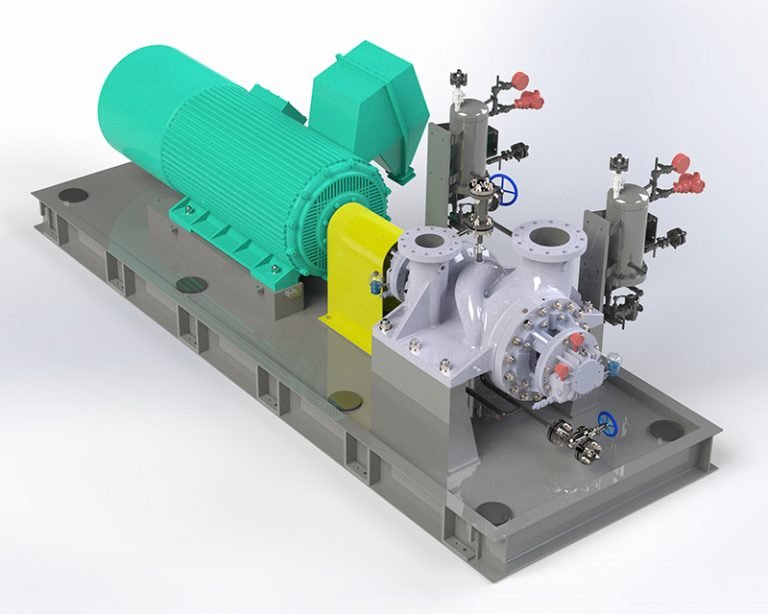
Routine Maintenance and Inspection Protocols
Check strainers every shift in bad service – five minutes with a flashlight can save a week offline. Flush the pump with clean solvent or hot condensate at the end of every run before whatever you’re pumping has time to harden. Put a vibration pen on the bearing housing once a day; a sudden jump from 2 mm/s to 6 mm/s almost always means something is growing on the impeller.
Longgang Pump Solutions: Engineered for Endurance
Yantai Longgang Pump Industry Co., Ltd. builds nothing but heavy-duty chemical pumps. We’ve supplied the main charge pumps for some of the biggest refineries and ethylene crackers running in China right now.
High-Reliability Designs Against Cavitation
Our API 610 BB-series pumps – BB1 through BB5 – are overbuilt for exactly the kind of service where cavitation kills ordinary pumps. Bigger eye areas, lower NPSHr numbers, and heavy wall casings that shrug off years of pitting.
Robust Solutions for Difficult Media
A few of the workhorses our customers swear by:
- LBD (BB2) – Radial Dissection Chemical Process Centrifugal Pump: Perfect for hot oil, acids, or anything that likes to crystallize. Pull the rotor, hose it down, put it back together – back online same day.
- LZA (OH1) / LZE (OH2) – Single Stage Cantilever Centrifugal Pump: No bottom bearing to clog, great for sumps full of sludge or polymer strings.
- Vertical Pumps (LY-VS4, LDT-VS6, LZV-OH3): Run them half-submerged in a slurry pit, and they just keep going. We have LY-VS4 units in phosphoric acid plants that have clocked over 40,000 hours with nothing more than a seal change.
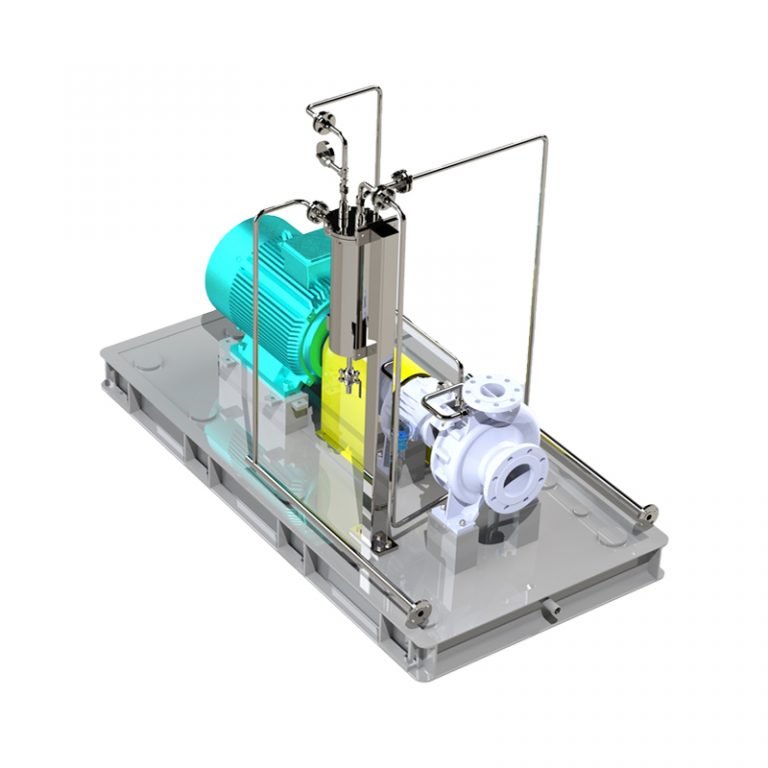
Conclusion: Maximizing Uptime in Chemical Processing
Cavitation and clogging don’t have to be the nightmares everybody thinks they are. Give the pump the suction conditions it needs, pick a model built for the junk you’re moving, and stay on top of basic housekeeping. Do that and your chemical pumps will run years instead of months between teardowns. Partner with a builder like Longgang who actually understands the difference between a catalogue pump and one that survives real plant life, and you’ll spend a lot less time with wrenches in your hands and a lot more time making product.
FAQ
Q: What is the primary indicator that my chemical pump is cavitating?
A: It sounds like gravel going through the casing, plus you’ll feel the whole pump shaking and see the discharge pressure bouncing all over.
Q: Can cavitation physically destroy a pump?
A: Absolutely. We’ve cut open impellers that looked like Swiss cheese after eighteen months of bad cavitation. Eventually, a vane breaks off, and it’s game over.
Q: How does Longgang address chemical corrosion alongside cavitation risk?
A: We build to API 610 with proper material selection – duplex stainless, Hastelloy, whatever the fluid demands – and design the hydraulics so NPSHr stays low even at off-peak flows.
Q: Is a semi-open impeller always better for preventing clogging?
A: Better for solids, yes, but you give up some efficiency. We help customers run the numbers: if your solids are small and occasional, stick with closed; if you’re fighting chunks every week, go semi-open or vortex.





